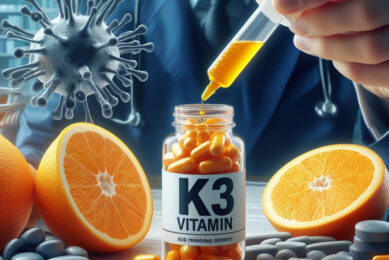EFSA recommends lower vit A levels in feed
EFSA’s FEEDAP Panel has adopted an opinion on the consequences for consumers of the use of vitamin A in animal feed, and recommended revised maximum levels in feed intended for the main food producing animals. It also recommended regulating complementary feed, used in combination with other feed or forages, to avoid excessive levels of vitamin A as well as monitoring vitamin A in foods of concern such as liver, and providing suitable advice to help consumers avoid excessive intakes.
The European Commission asked EFSA to estimate the vitamin A intake of the population and review the scientific evidence linked to the possible risk of bone health problems in elderly people associated with high vitamin A intakes, including two reports from the UK and France. The use of vitamin A in feed is relevant for consumers since it remains in food products of animal origin and therefore contributes to people’s overall intake. Vitamin A is an essential nutrient for people and animals, promoting vision, normal growth and development. It is added to feed to meet animal nutrition needs, and maximum levels are set by EU legislation for livestock bred for fattening.
Consumer exposure
The Panel looked at consumer exposure to vitamin A from various sources in our diets using studies from several EU countries. It found that a small proportion of the European population is at risk of exceeding the safe Upper Limit (UL) of 3,000 µg per day set by Scientific Committee on Food in 2002. The greatest risks of exceeding the UL come from eating liver – which contains high concentrations of preformed vitamin A – and from taking vitamin A supplements. Dairy products are also an important source, particularly in north European diets. Eggs make a smaller contribution and fish and other types of meat are not a significant source. Quantitative correlations between retinol intake and bone health risk justifying a lower UL for elderly people could not be established. EFSA’s experts considered it advisable for those most at risk of osteoporosis and bone fracture – particularly post-menopausal women – to restrict intake to a lower level of 1,500 µg per day until new data indicate a need to re-evaluate the UL. The Panel noted that bone health is affected by various nutritional factors, including vitamin D, Ca, and Zn, which should also be considered when people are given dietary advice.
Feed recommendations
The Panel recommended that risk managers consider setting new maximum levels of vitamin A in feed intended for the main food producing animals – pigs, cattle and poultry. These levels would avoid any unnecessary high intakes among consumers without negative effects on animal health and performance.Amongst these recommendations, the Panel proposed setting a level for fattening pigs at around half the current amount allowed by EU legislation.
EfSA’s opinion has been forwarded to the Commission as a basis for any further discussion with Member States on risk management aspects. See the opinion on the consequences for the consumer of the use of vitamin A in animal nutrition.
 Beheer
Beheer









 WP Admin
WP Admin  Bewerk bericht
Bewerk bericht